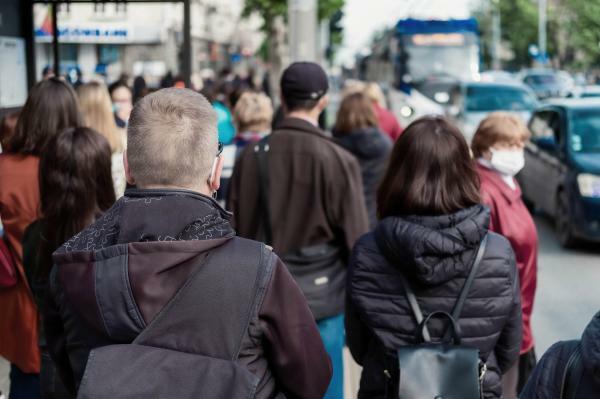
Throughout life we go through different situations that produce certain reactions. As we live, we are constantly exposing ourselves to moments that can generate some nervousness, since they are unfamiliar situations.
A feeling of discomfort, fear and anxiety appears when we face the new. However, there are people who have great difficulties in coping with these types of moments and suffer for it. These problems generate inconveniences in other areas of their life, since the level of stress they feel is very great.
It may have happened to you or perhaps you know someone who has these reactions. Do you want to know more about this? In this Psychology-Online article, we will provide you with information about the types of social phobia, what are their characteristics and some examples.
Index
- Characteristics of social phobia
- Social phobia of interaction
- Social phobia of acting
- Examples of types of social phobia
Characteristics of social phobia.
First of all, we will talk about what is social phobia. There are some criteria that allow its detection and that allow an approach to this clinical picture. According to the DSM-V, social phobia is classified as a disorder of social anxiety. Specifically, the characteristics of social phobia are:
- Fear and anxiety about specific social situations: when there is the possibility of being judged negatively
- Avoidance or resistance from social situations.
- Disproportionate fear and anxiety. In this article, we tell you what to do when you have anxiety.
- The duration of symptoms is usually six months or more.
- Deterioration in labor, social relations and other areas of importance to the person.
- Fear and anxiety are not caused by the physiological effects of a toxic substance or by a certain disease.
- In case of illness, fear, anxiety and avoidance they are not related to it.
Social phobia of interaction.
One of the types of social phobia that consists of the fear of relating to other people. Individuals suffering from this type of social phobia have thoughts, emotions, and behaviors linked to failure in front of others. For this reason, they have a great fear of exposure in public, since they are conditioned by the gaze and the word of others.
Usually this type of social phobia begins during adolescence. At this moment in life, human beings begin to interact with different people who are later part of his social circle, a fact that can produce fears and insecurities. In turn, progressively the person begins to detach himself from his family nucleus and to establish new social relationships outside of it.
In this article, you will find more information about Fears in childhood and adolescence and their relationship with self-esteem.
Symptoms of social phobia of interaction
A person with social phobia shows different signs. Next, we will look at three types of characteristic symptoms of social interaction phobia
- Emotional symptoms: manifestations that involve the emotions that a person has when faced with anxiety situations. Among the most relevant, the fear and anguish about being judged stands out.
- Behavioral symptoms: they consist of those behaviors that people present when faced with an anxiety situation. The most frequent is the avoidance of social moments.
- Bodily symptoms: manifestations that occur in the body when a person experiences an anxiety situation. The most prominent symptoms are sweating, tremors, dizziness, shortness of breath, increased heart rate, flushing, headache, stomach pain, or nausea, among others.
It is important to clarify that social phobias are not the same in each person. Therefore, take into account age, sex, family medical history and pre-existing diseases to address social phobia that should be treated by a health professional.
Social phobia of acting.
This type of social phobia refers to fear of being watched by other people. Social phobia has different intensities: mild, moderate or severe. In these cases, the main causes of social phobia are usually the following:
- Unpleasant events that have occurred in the past: in circumstances in which the person has felt fear and / or anxiety in front of other people. You may be emotions they persist in the person and then reappear later, thus constituting a social phobia.
- Environmental factors: it is possible that a family member suffers from this type of clinical picture. This enables the person to imitate these behaviors and adopt them as patterns of behavior in life.
Symptoms of acting social phobia
People with acting social phobia have the following symptoms:
- Emotional symptoms: feels intense fear during social situations and insecurity in front of people, among others.
- Behavioral symptoms: affected people adopt avoidance behaviors so as not to be exposed to others.
- Bodily symptoms: when a person with social phobia feels observed by other people, they manifest symptoms such as tremors, redness or stomach pain, among others.
The presence of any of these symptoms does not necessarily mean that we have a social phobia. This diagnosis must be made by a health professional, since he will be in charge of indicating a treatment appropriate to the characteristics of the patient, as well as being able to observe the evolution throughout weather.
Examples of types of social phobia.
In this section we will see some examples of social phobia. It is important to clarify that here we will talk about situations that can occur in a generalized way and that we do not emphasize any particular event.
- Go to work.
- Attend parties.
- Start a conversation
- Make an exhibition in public.
- Eating food in front of others.
- Greet people.
- Go to school.
- Hiding from people.
- Avoid eye contact.
This list of examples of social phobia only contains the best known situations, although there are other situations that are within the particularities of social phobia. In this article, we give you tips to overcome social phobia.
This article is merely informative, in Psychology-Online we do not have the power to make a diagnosis or recommend a treatment. We invite you to go to a psychologist to treat your particular case.
If you want to read more articles similar to Types of social phobia: characteristics and examples, we recommend that you enter our category of Clinical psychology.
Bibliography
American Psychiatric Association. (2013). Diagnostic and Statistical Manual of Mental Disorders, (5th ed.). Washington DC.
Bados, A. (2009). Social phobia. University of Barcelona, Faculty of Psychology. Departament de Personality, Avaluació i Tractament Psicológica.
Staudt, M. A., Stortti, M. A., Thomaé, V. M. N., Morales Barturen, S. M. (2006). SOCIAL PHOBIA: An increasingly frequent disabling disease. Postgraduate Journal of the VIa Cátedra de Medicina, 5 (155), 15-19.


